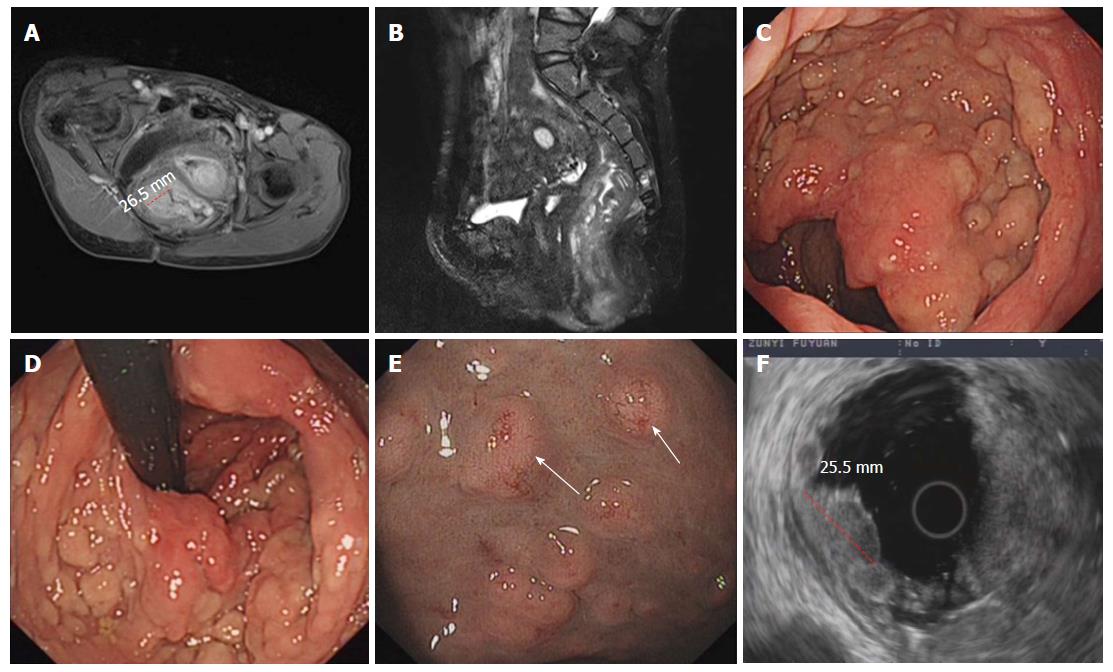Copyright
©The Author(s) 2018.
World J Gastroenterol. Sep 7, 2018; 24(33): 3806-3812
Published online Sep 7, 2018. doi: 10.3748/wjg.v24.i33.3806
Published online Sep 7, 2018. doi: 10.3748/wjg.v24.i33.3806
Figure 1 Patient skin changes and spinal deformities.
A: Patient presented with multiple subcutaneous nodules and café au lait spots; B: MRI detected multiple nodules with uniform densities and clear boundaries that were visible on the chest and abdomen (white arrow); C: Scoliosis was noted at the spinal column; D: MRI identified scoliosis and thoracic deformity. MRI: Magnetic resonance imaging.
Figure 2 Imaging of left external iliac vein malformation in the patient.
A: MRI sagittal image of the left iliac vein; B: MRI coronal image of the left iliac vein (red dotted line marking the widest point of the vein, measuring approximately 27.4 mm). MRI: Magnetic resonance imaging.
Figure 3 Imaging, endoscopy and endoscopy ultrasonographic findings of multiple rectal neuroendocrine tumors in the patient.
A and B: Magnetic resonance imaging (red dotted line marking the widest point of the tumors, measuring approximately 26.5 mm); C and D: Endoscopic manifestations; E: Blood vessels were apparent on the surface of the nodules under the NBI (neuroendocrine tumors marked by the white arrow); F: Endoscopic ultrasonography of the multiple rectal neuroendocrine tumors (red dotted line marking the widest point of the tumors, measuring approximately 25.5 mm). NBI: Narrow-band imaging.
Figure 4 Immunohistochemical results of skin neurofibromatosis and multiple rectal neuroendocrine tumors.
A: HE staining of multiple rectal neuroendocrine tumors (× 200); B: CgA staining pattern of multiple rectal neuroendocrine tumors (× 200); C: HE staining of the skin neurofibromatosis (× 200); D and E: S-100 and CD34 staining patterns of skin neurofibromatosis (× 200). HE: Hematoxylin and eosin.
- Citation: Xie R, Fu KI, Chen SM, Tuo BG, Wu HC. Neurofibromatosis type 1-associated multiple rectal neuroendocrine tumors: A case report and review of the literature. World J Gastroenterol 2018; 24(33): 3806-3812
- URL: https://www.wjgnet.com/1007-9327/full/v24/i33/3806.htm
- DOI: https://dx.doi.org/10.3748/wjg.v24.i33.3806












